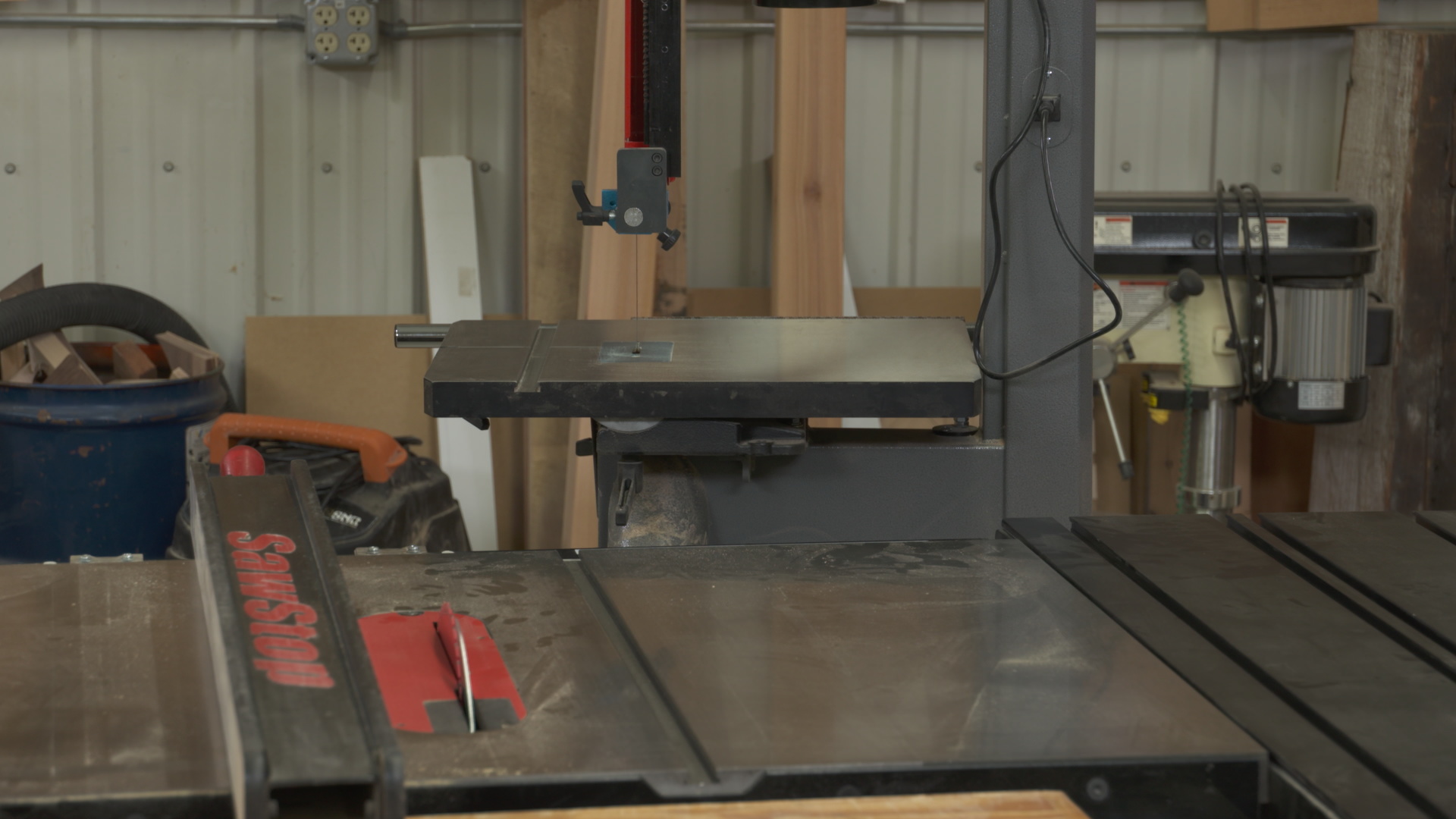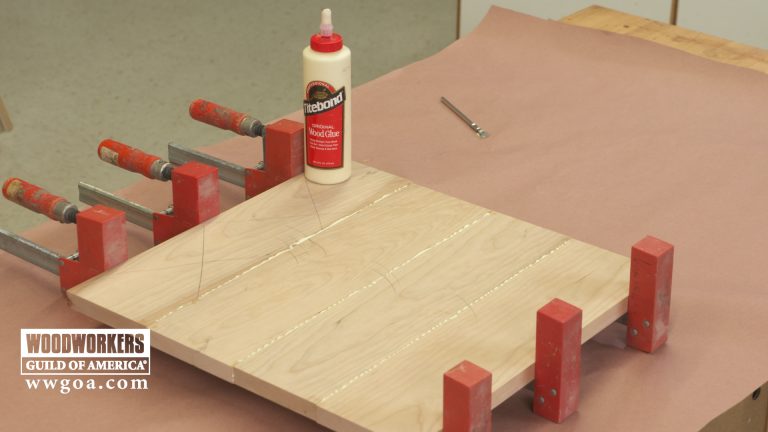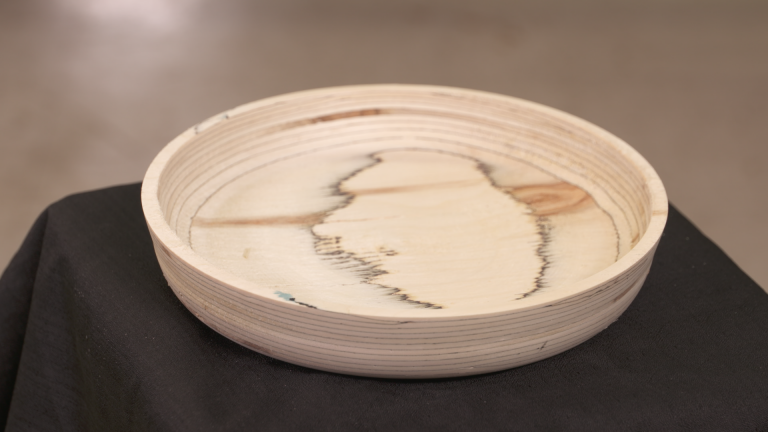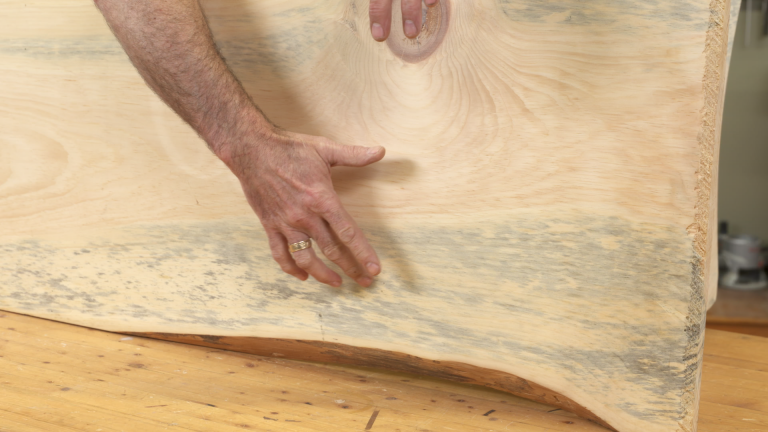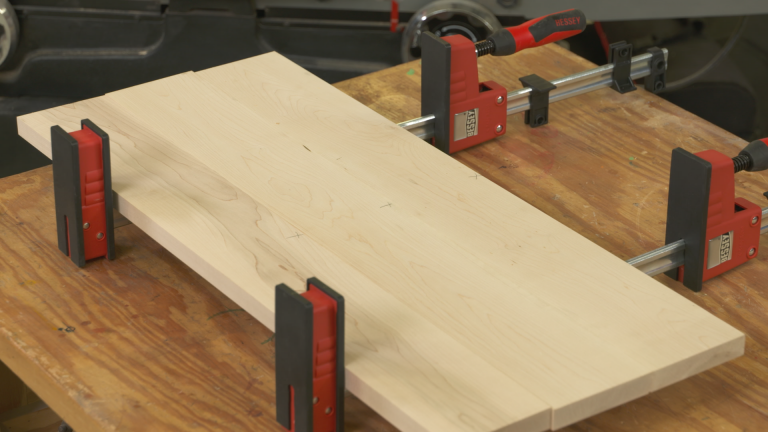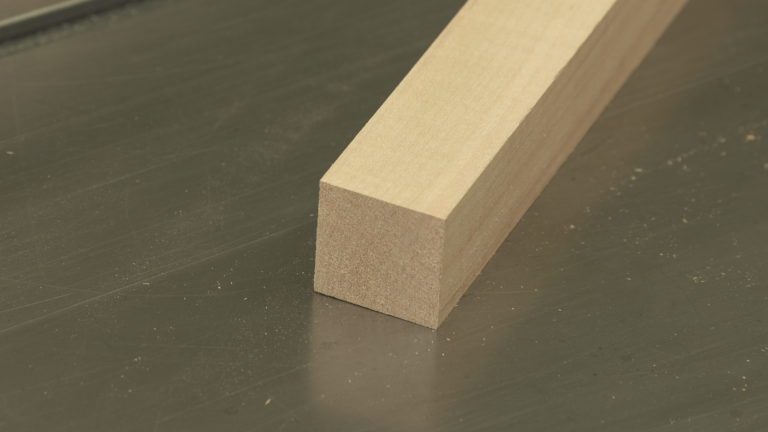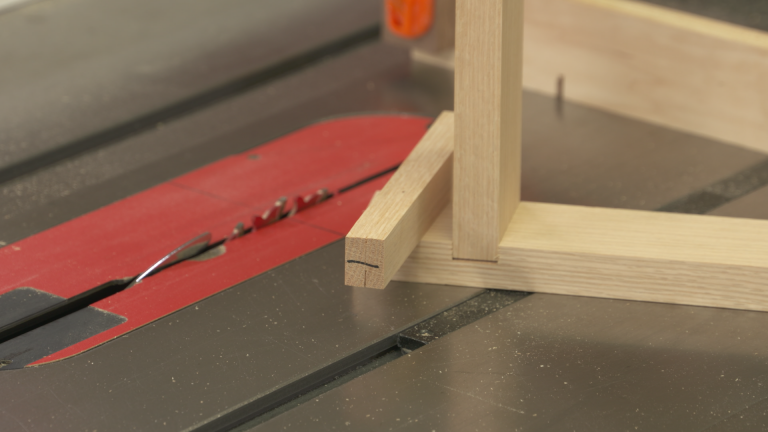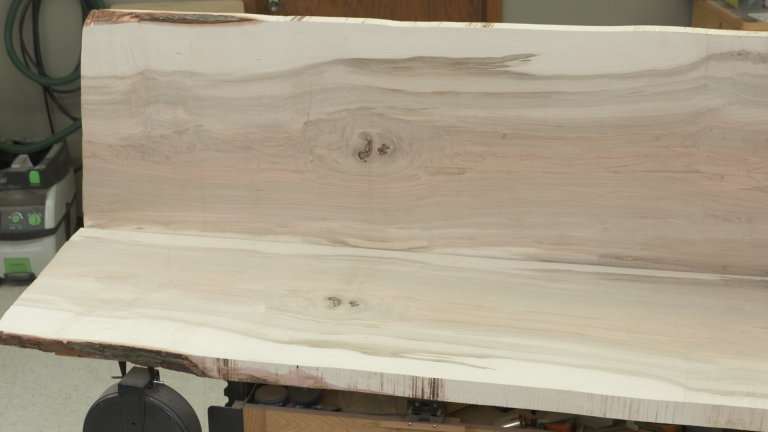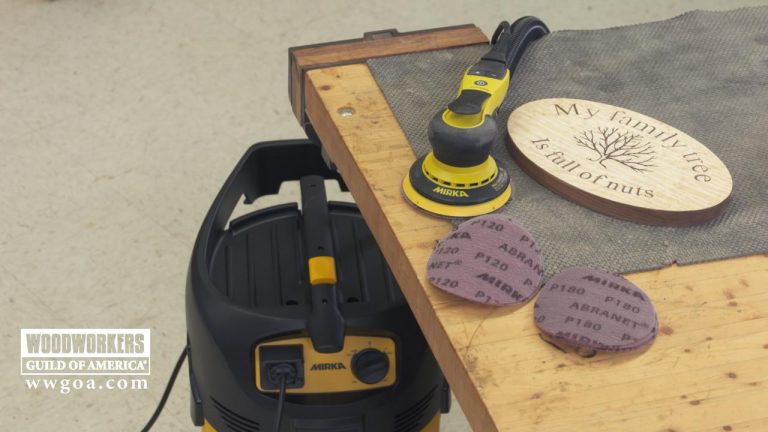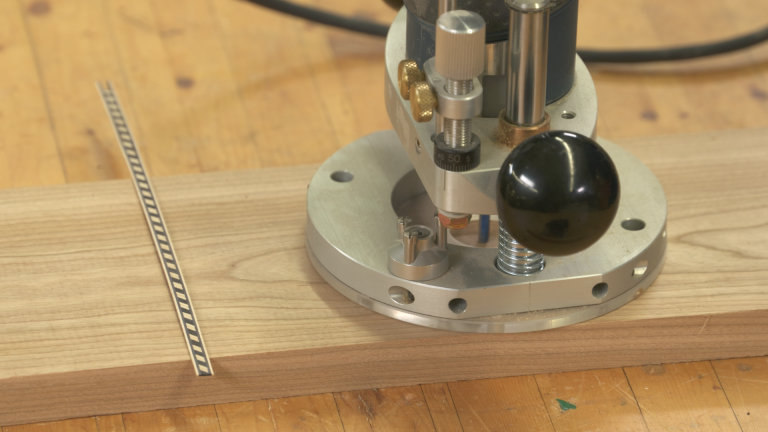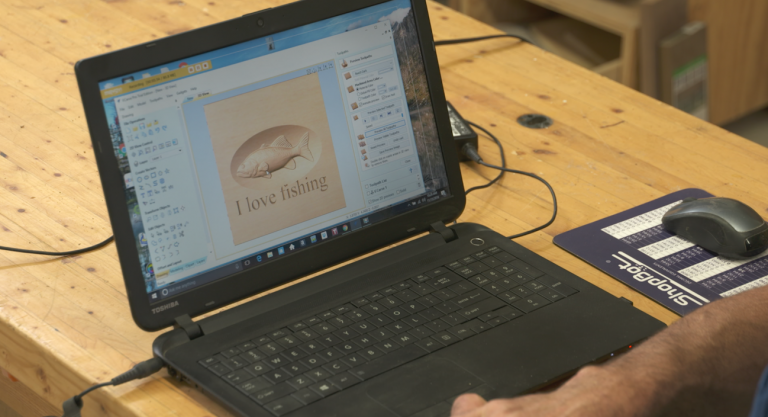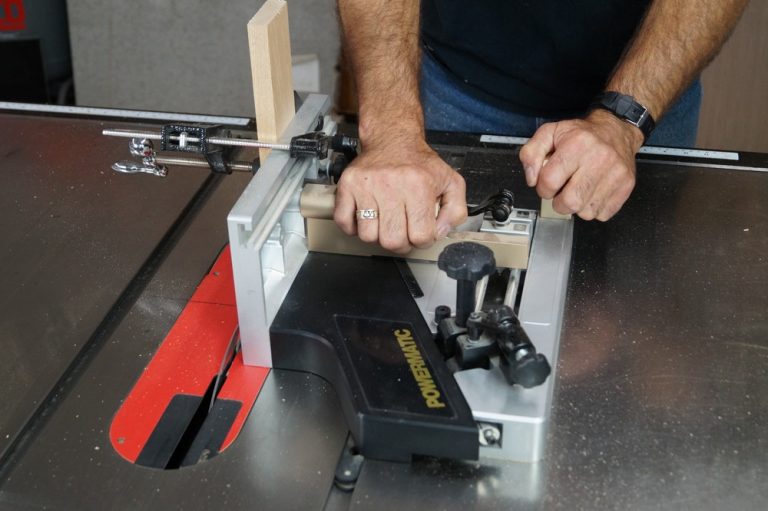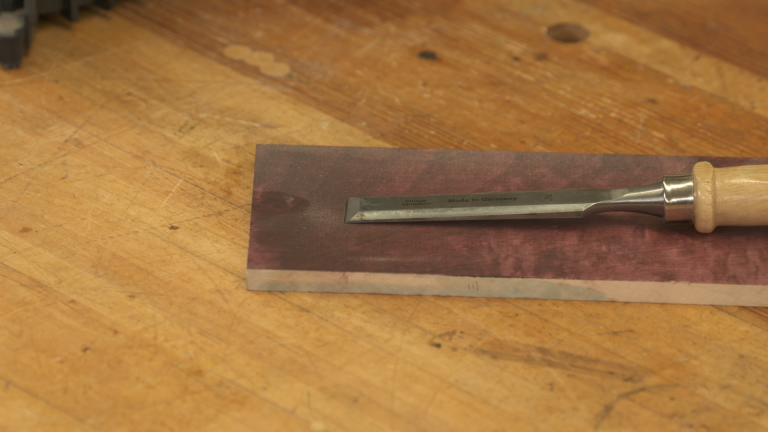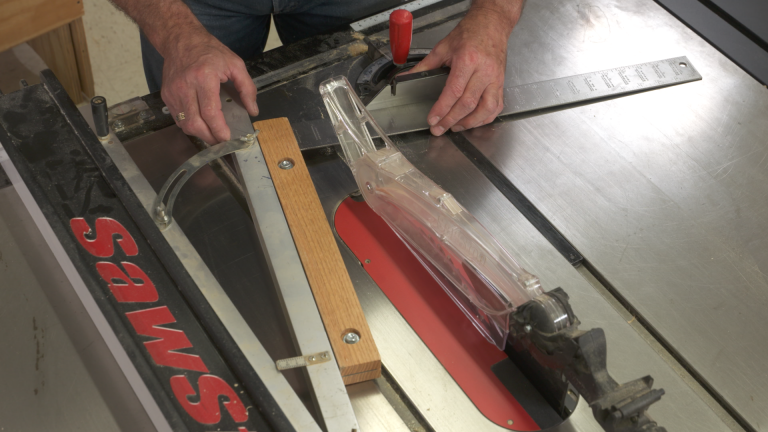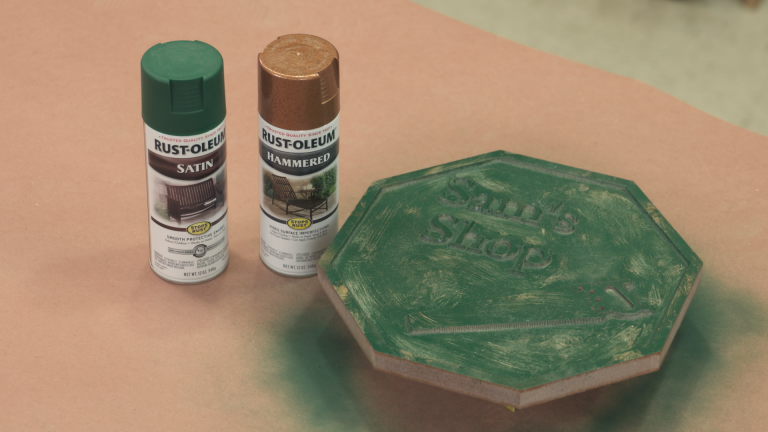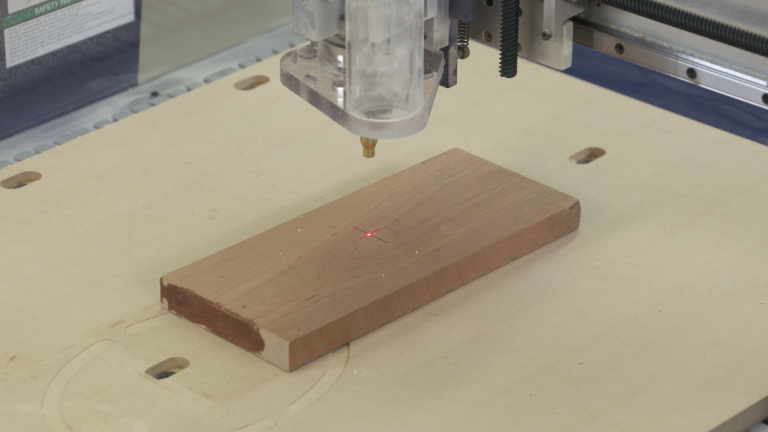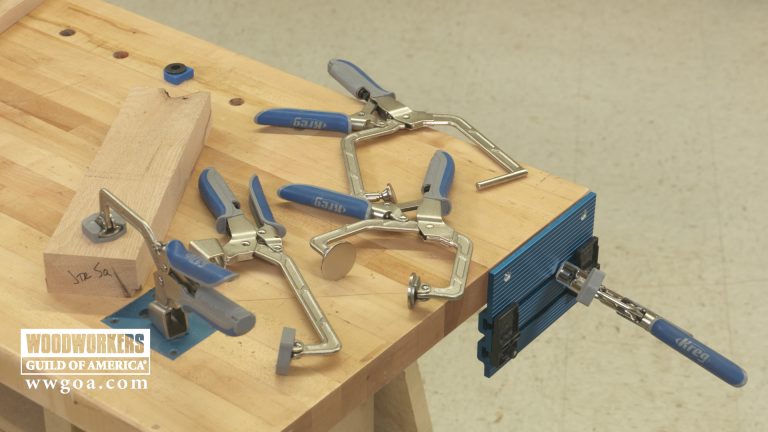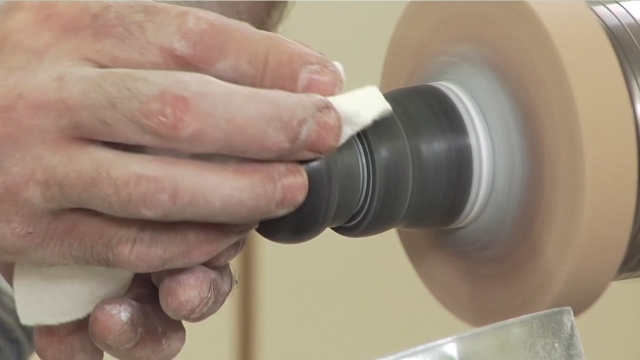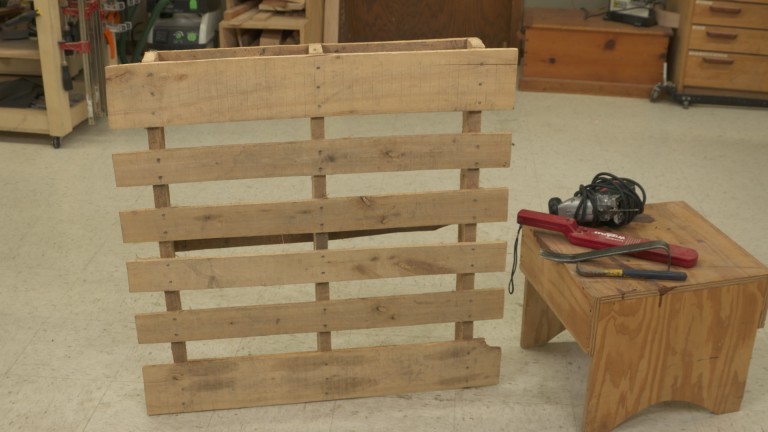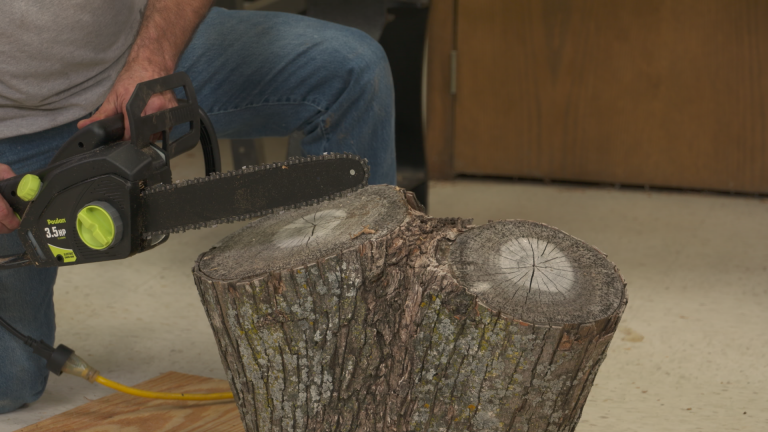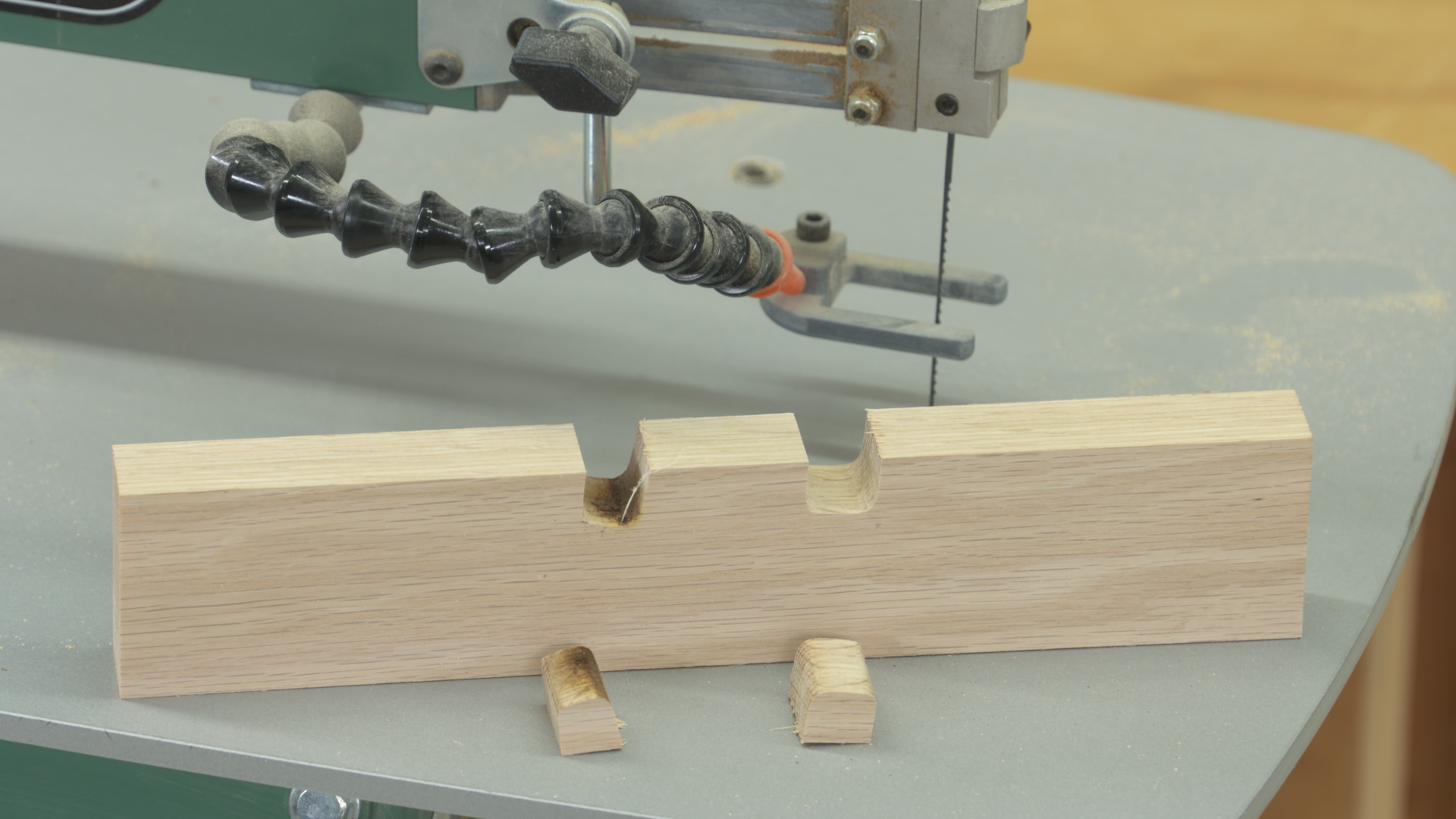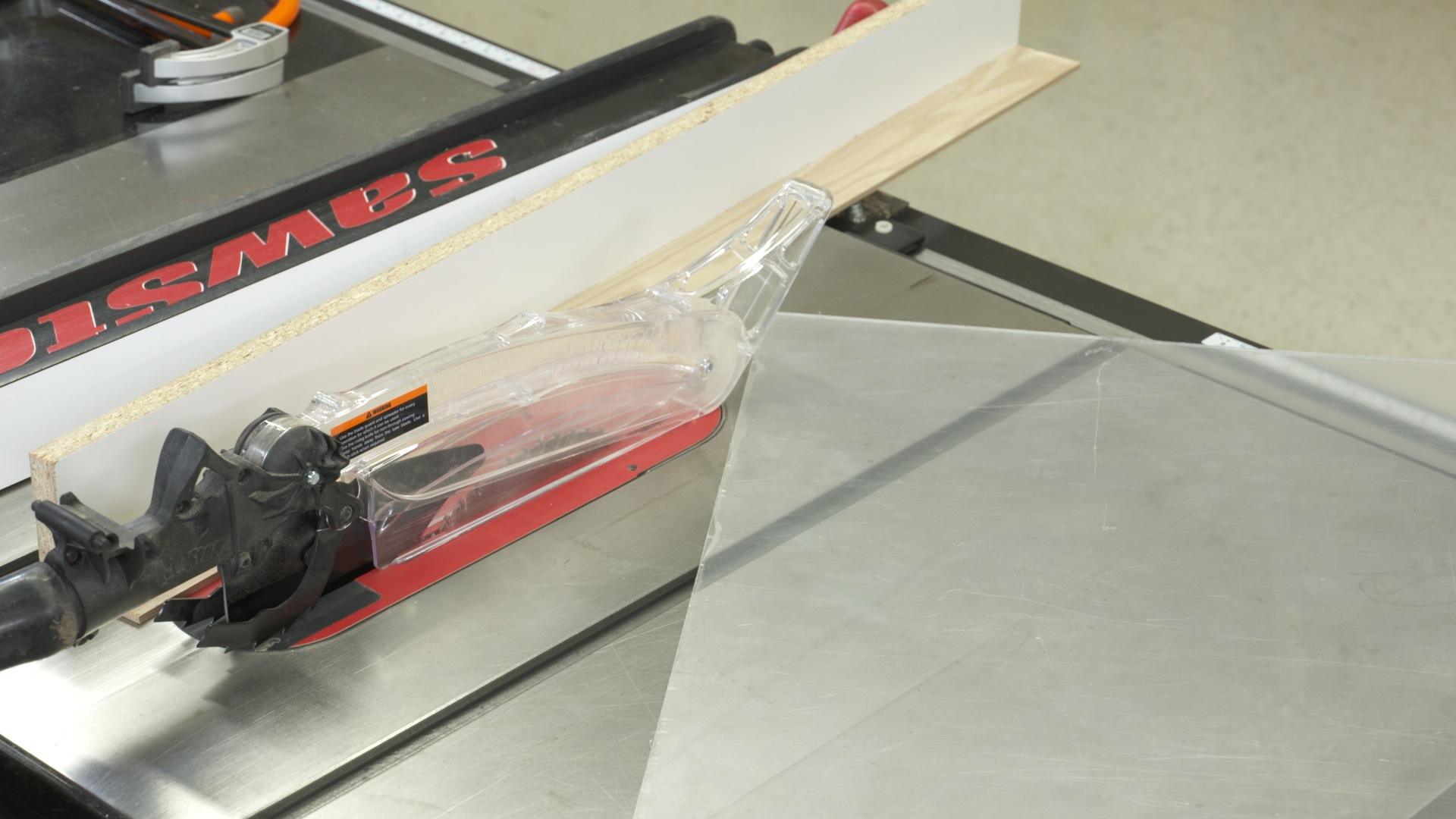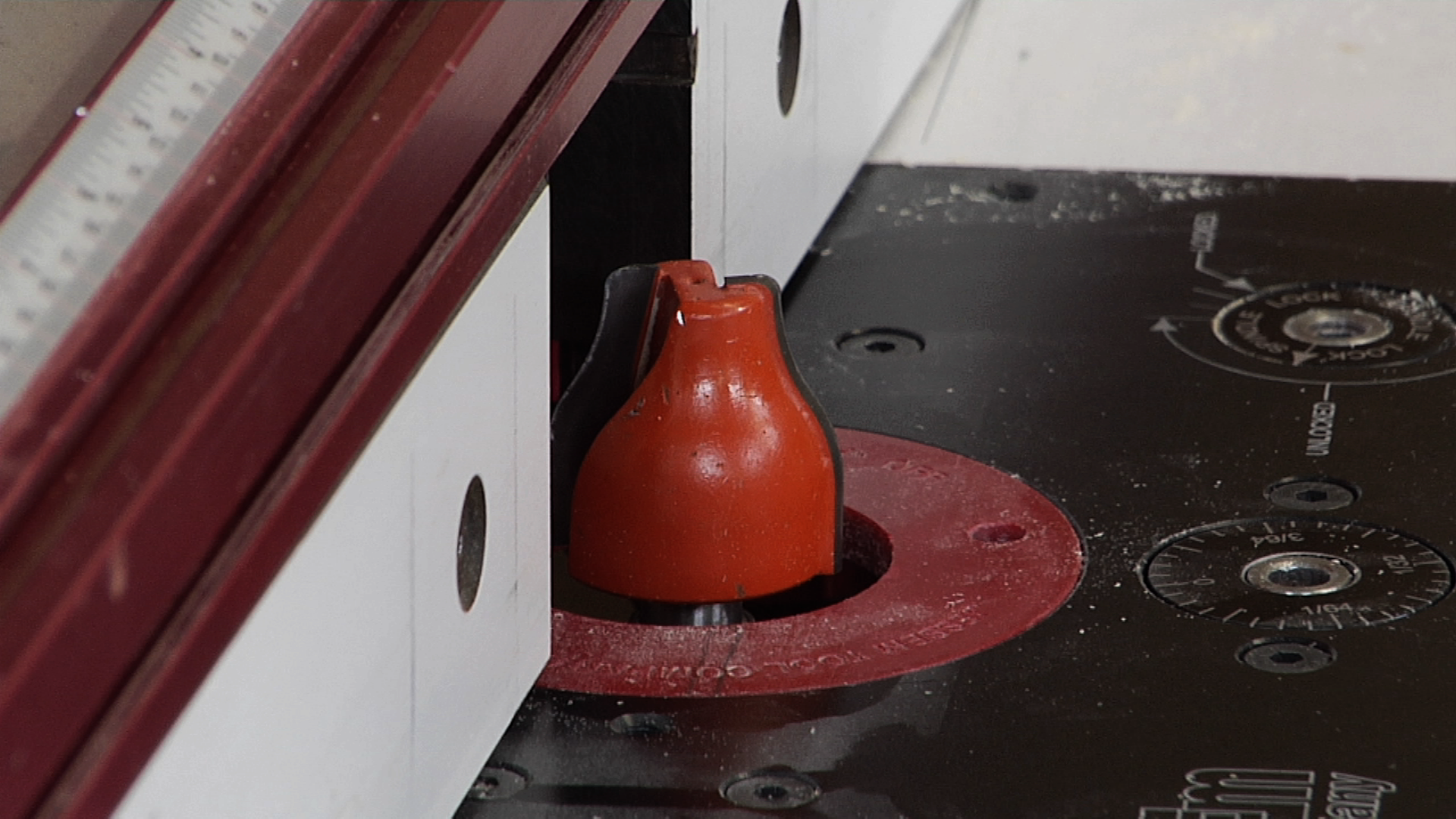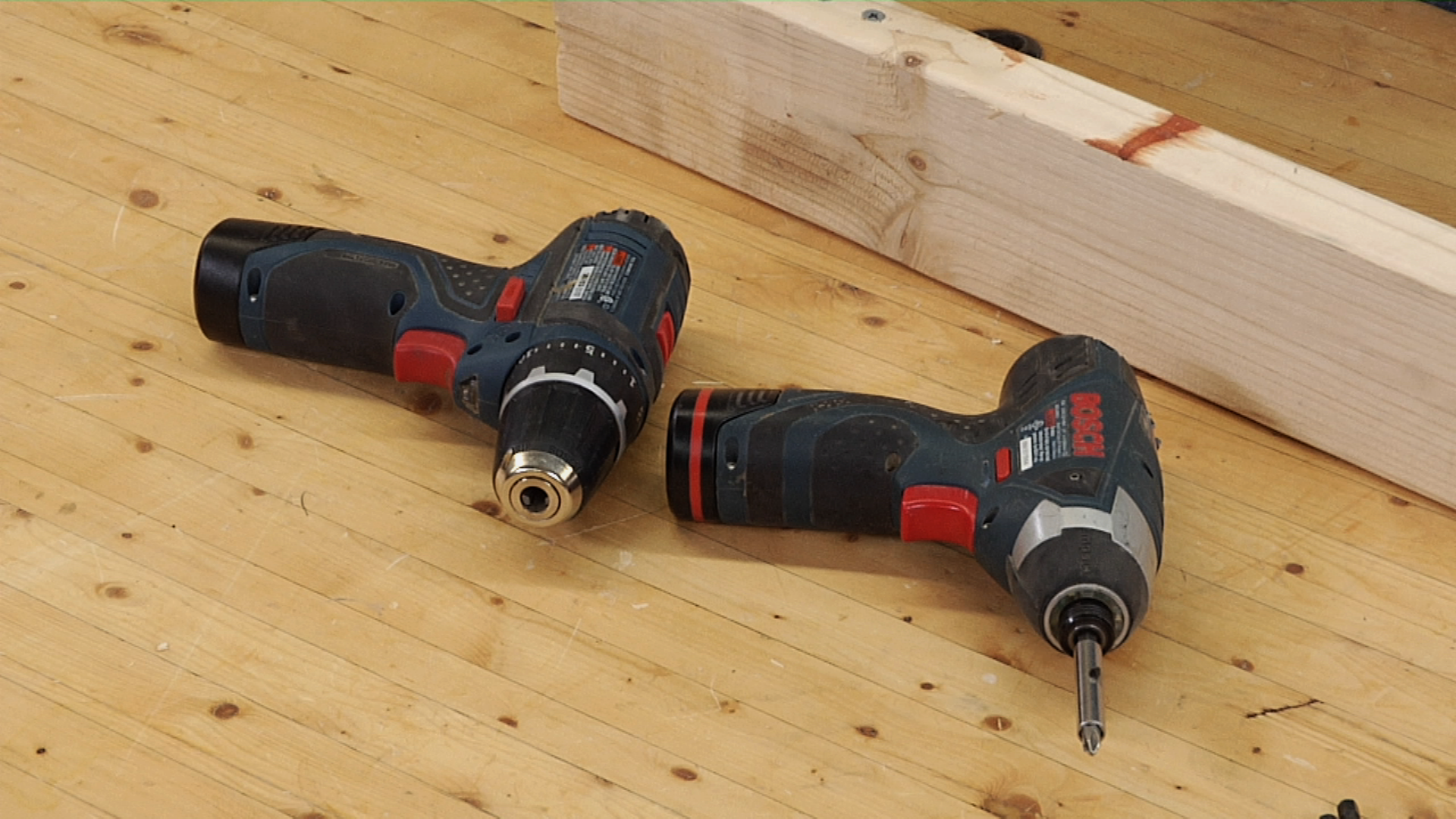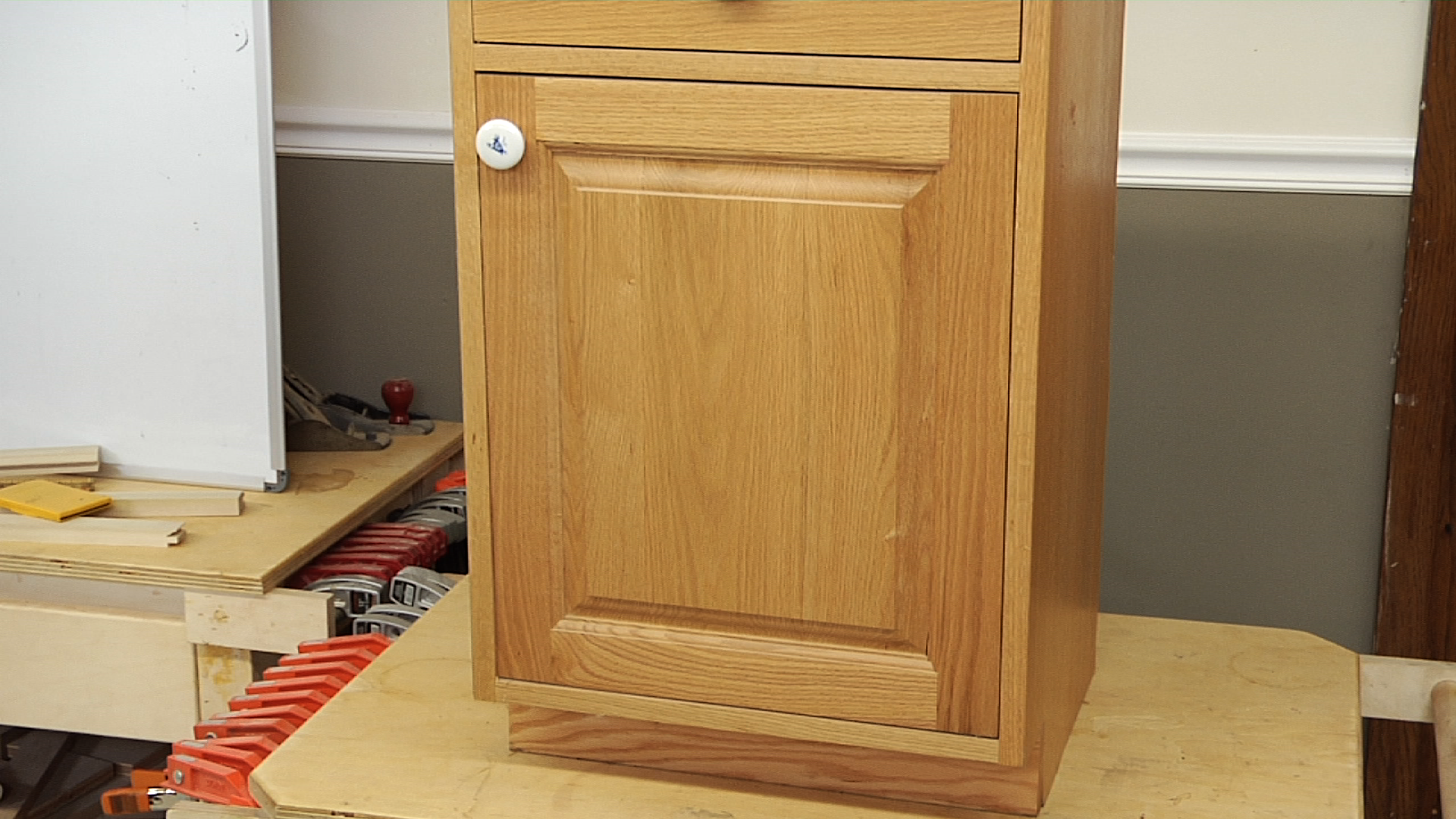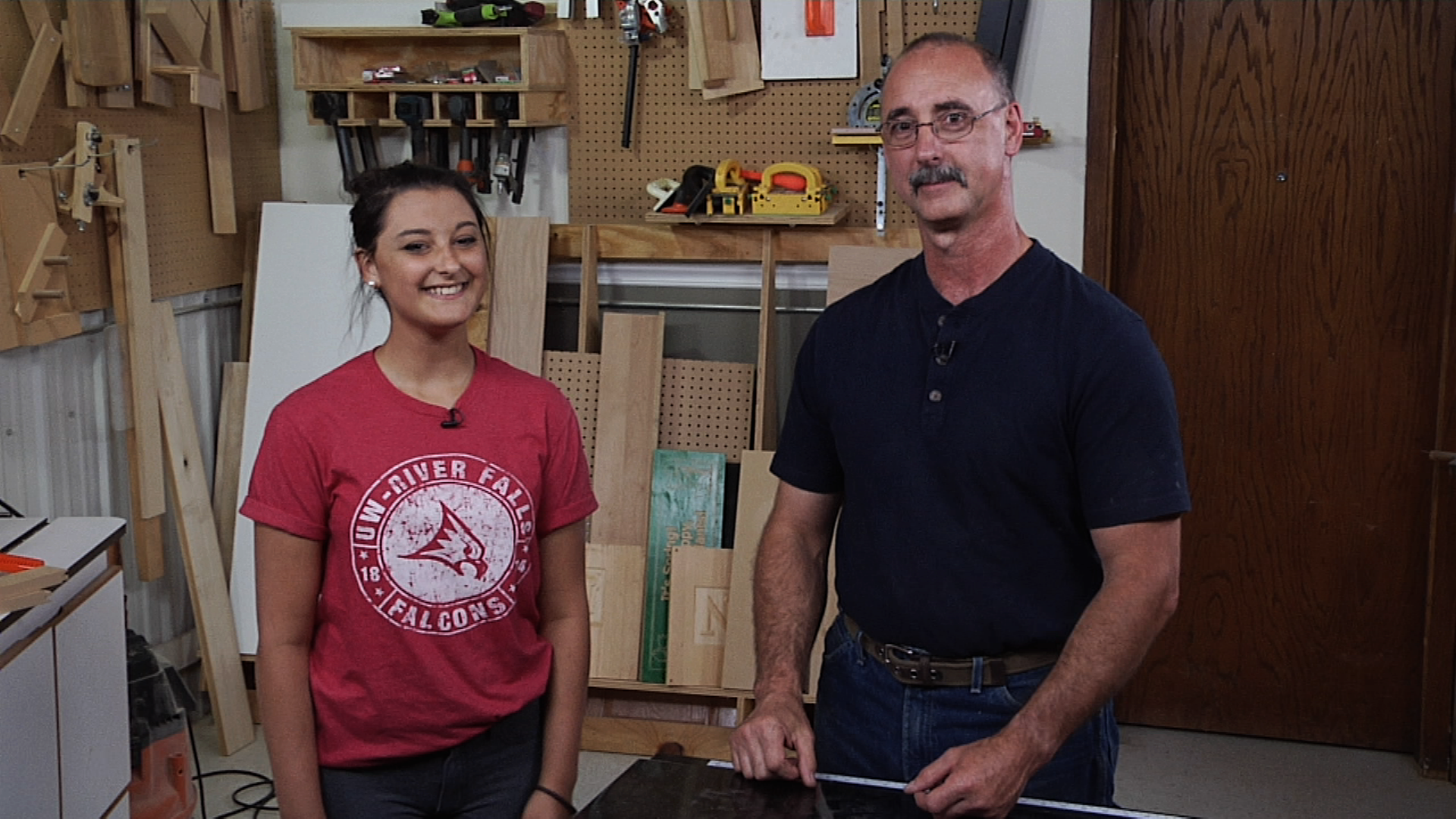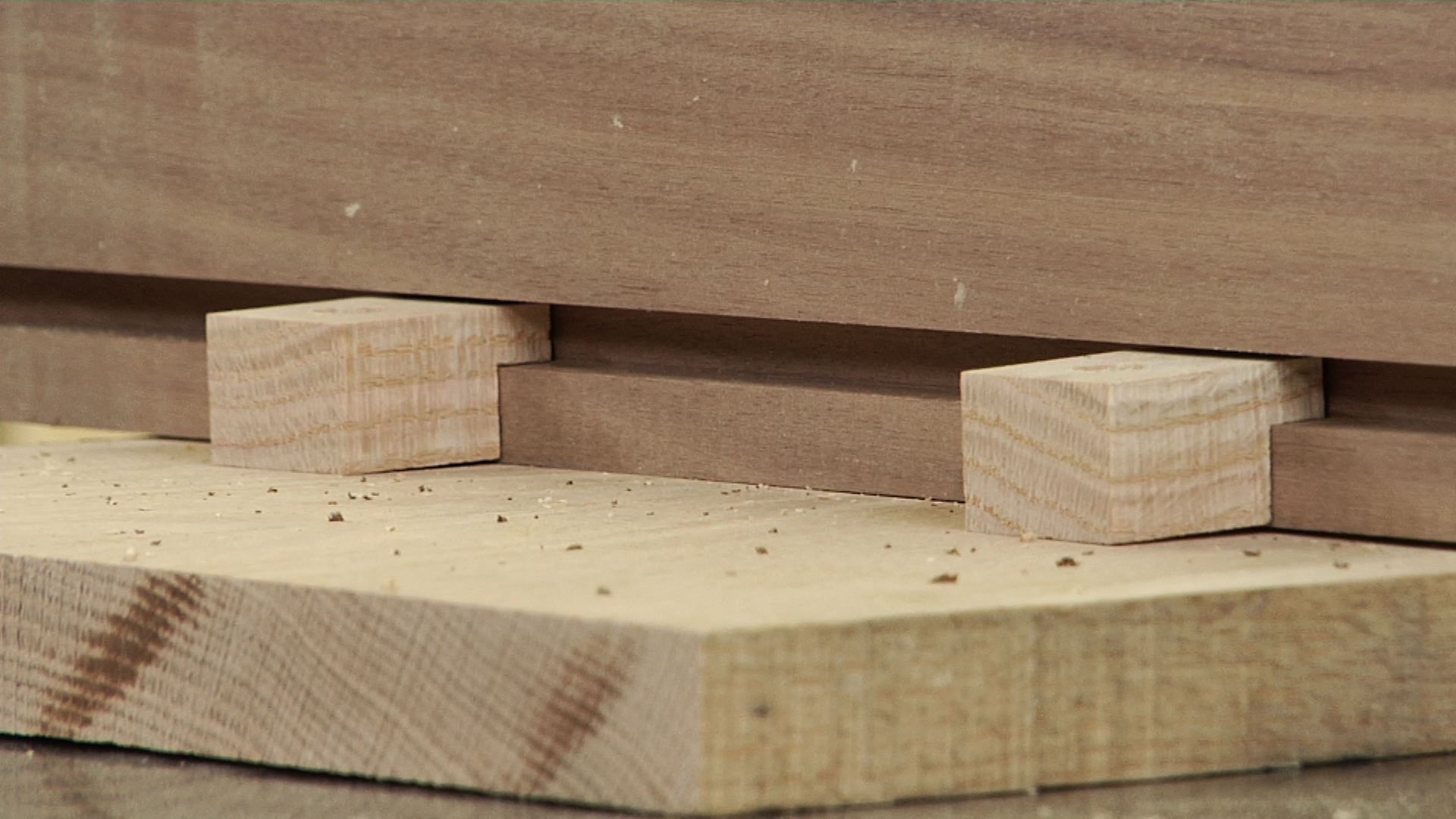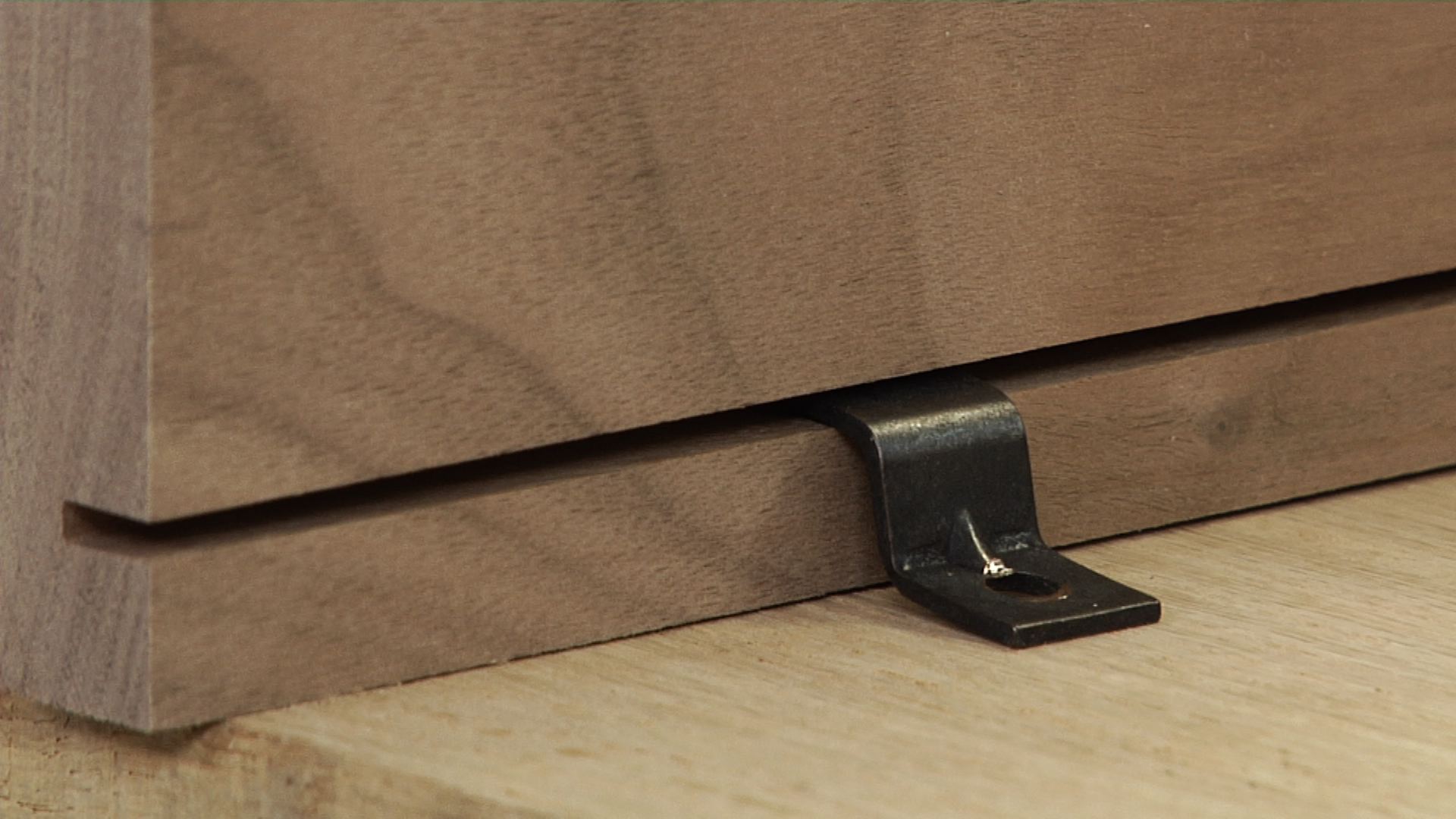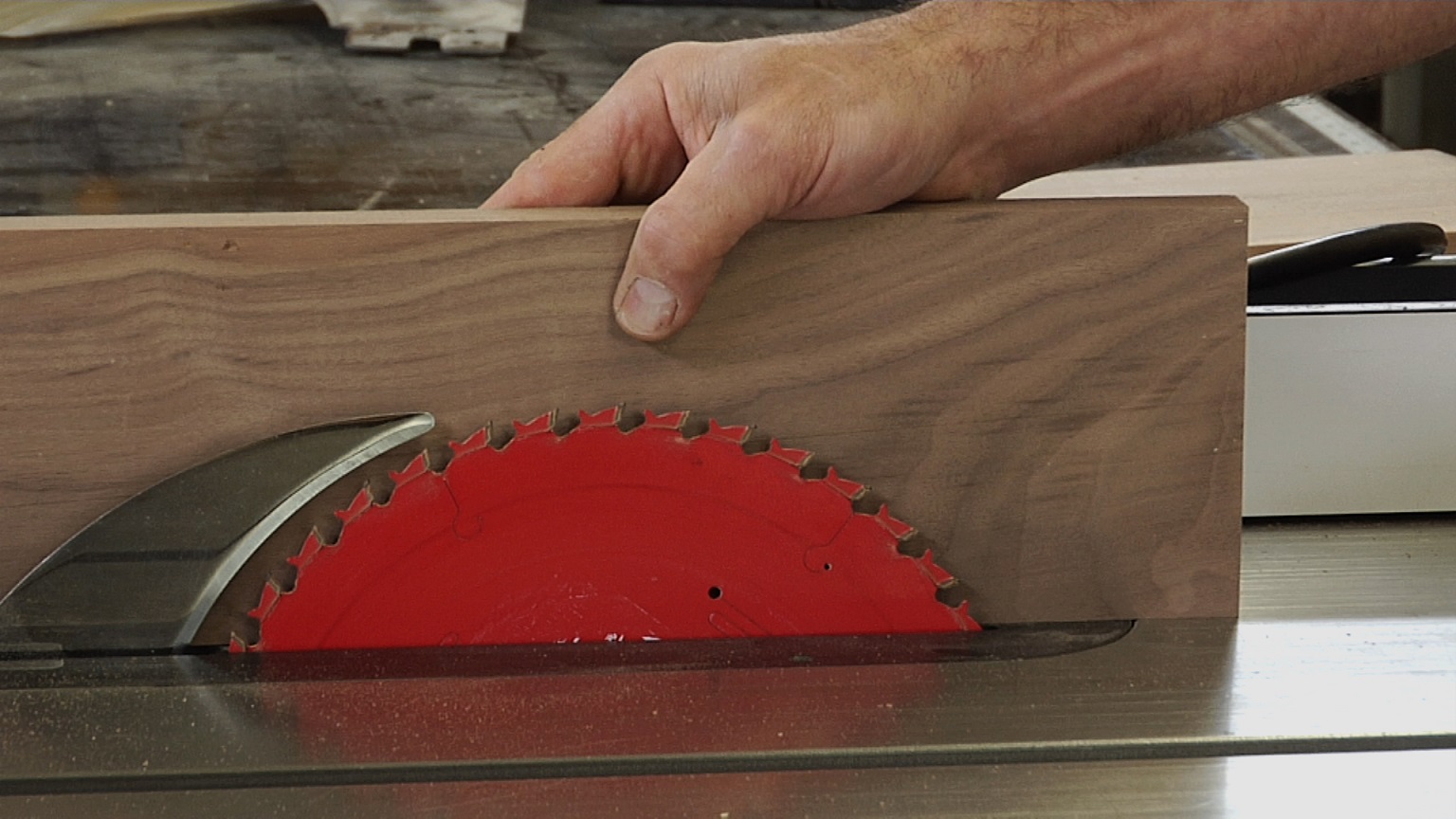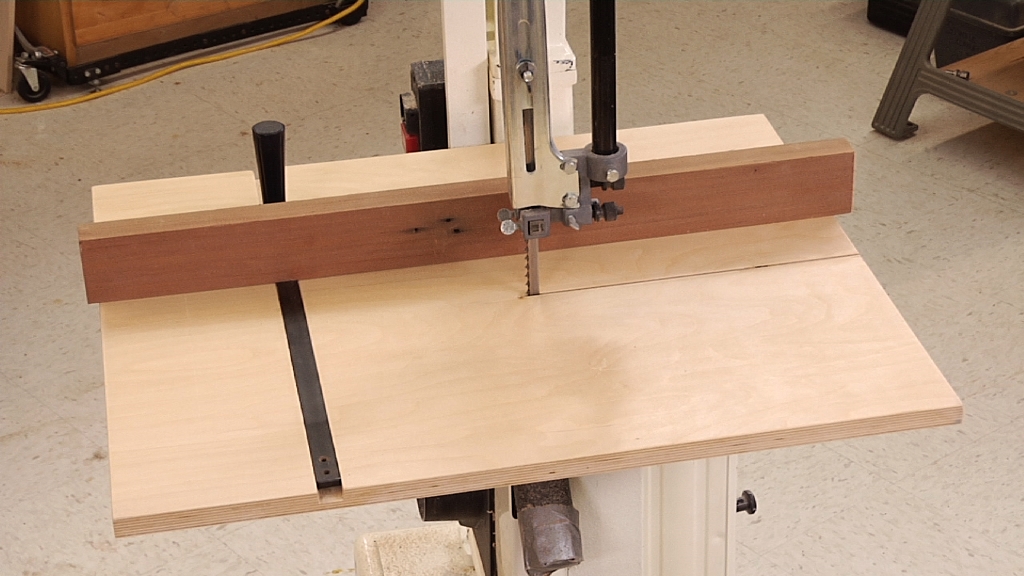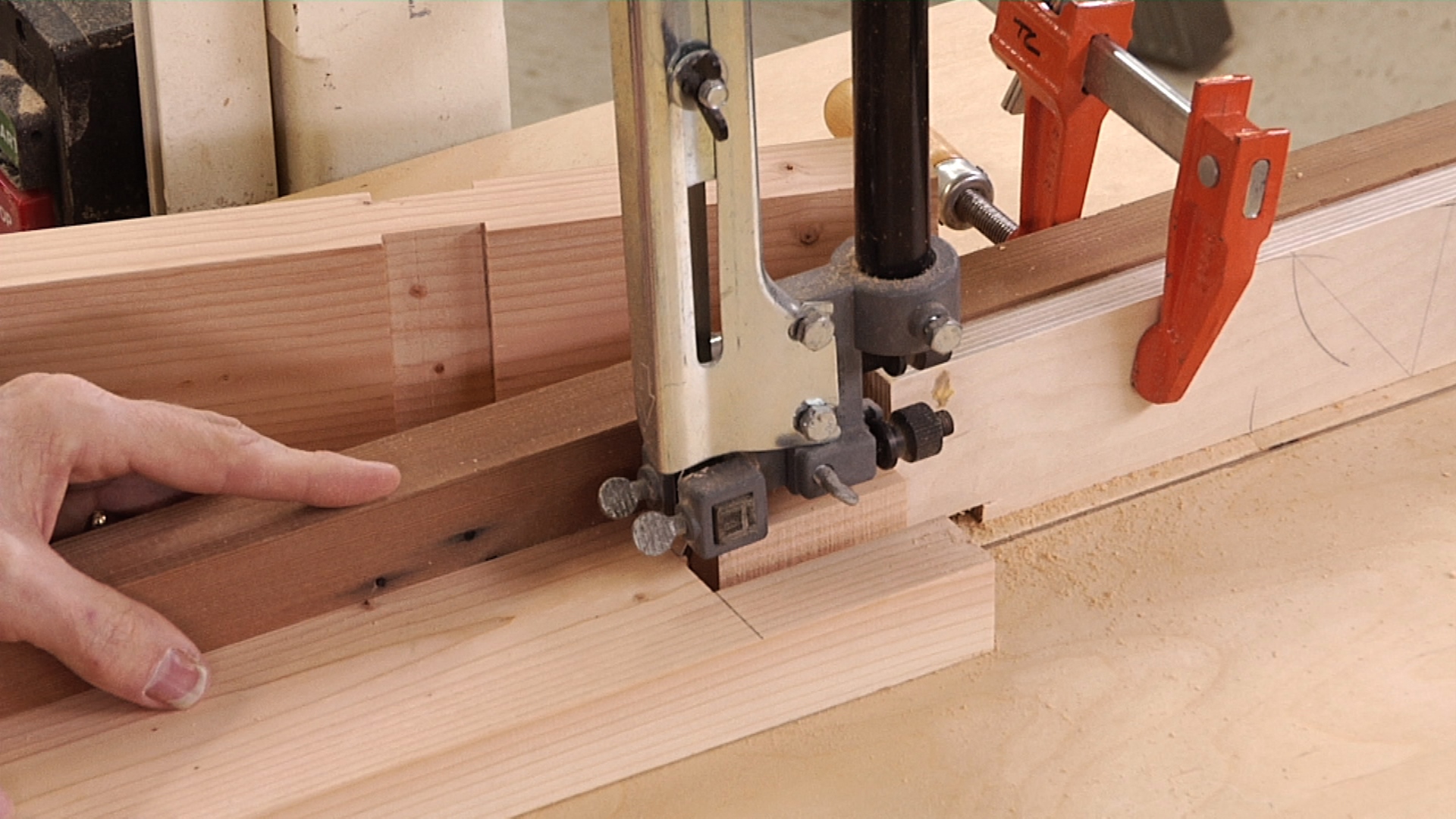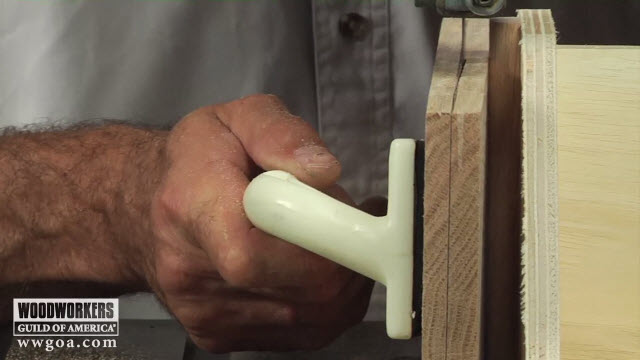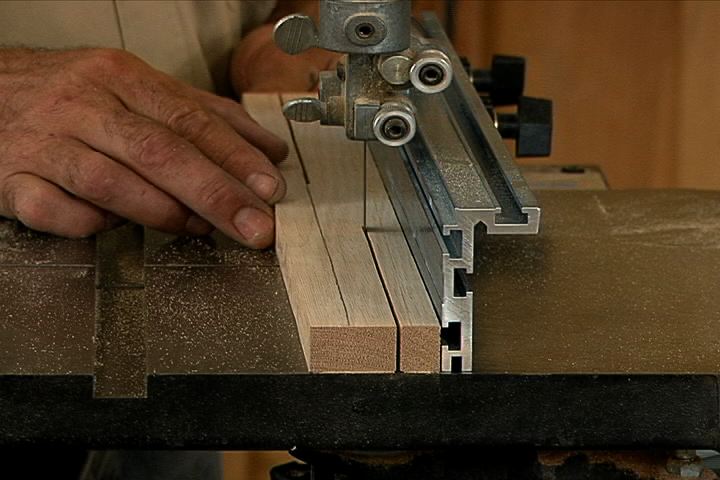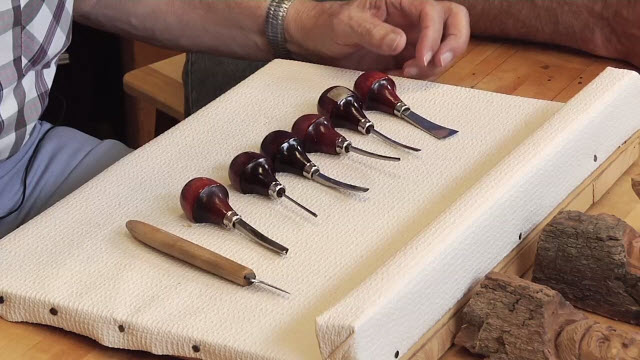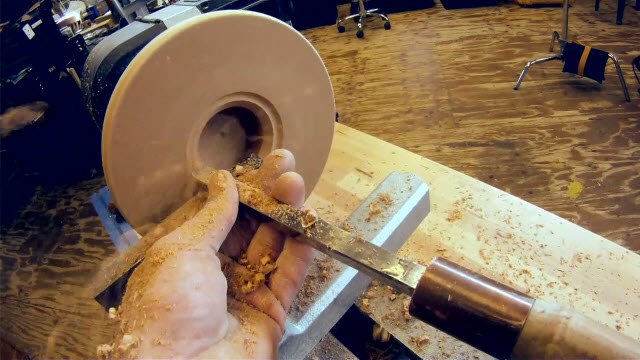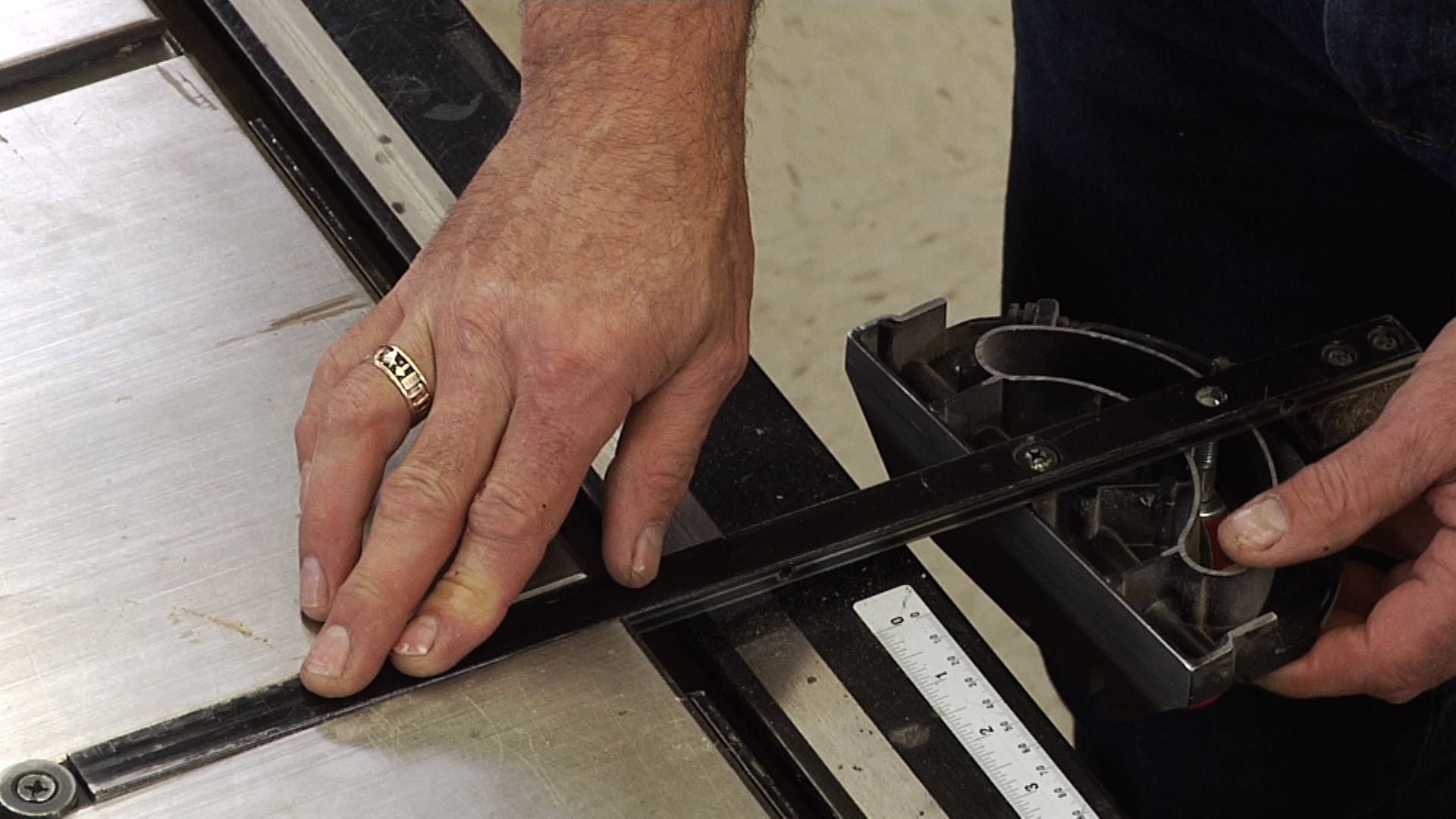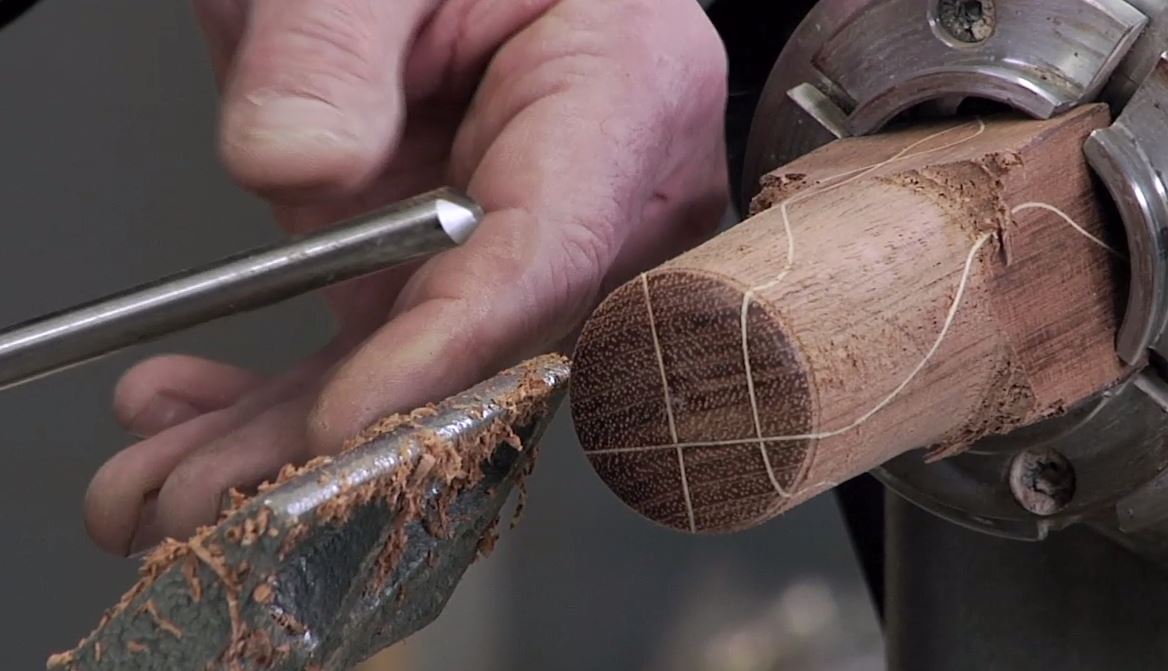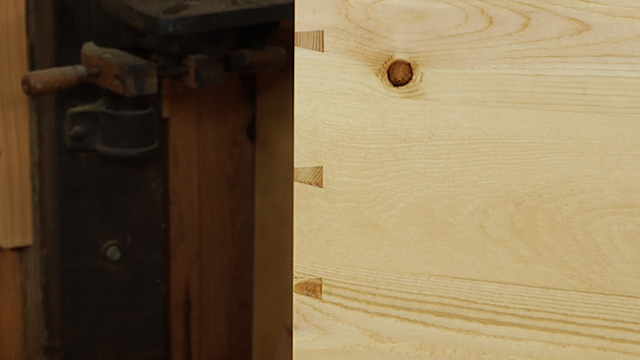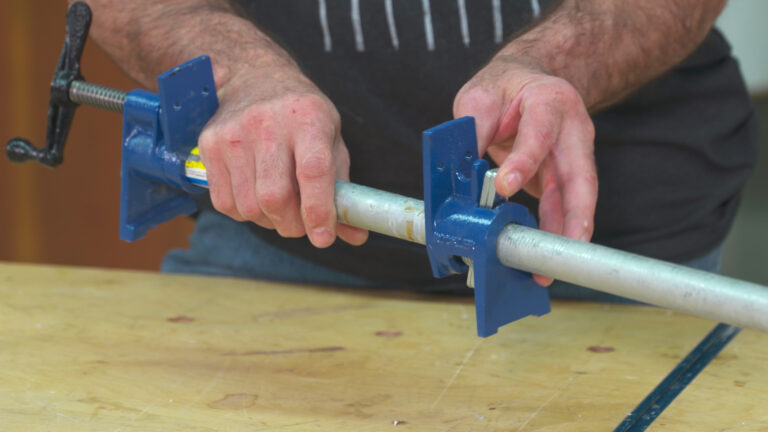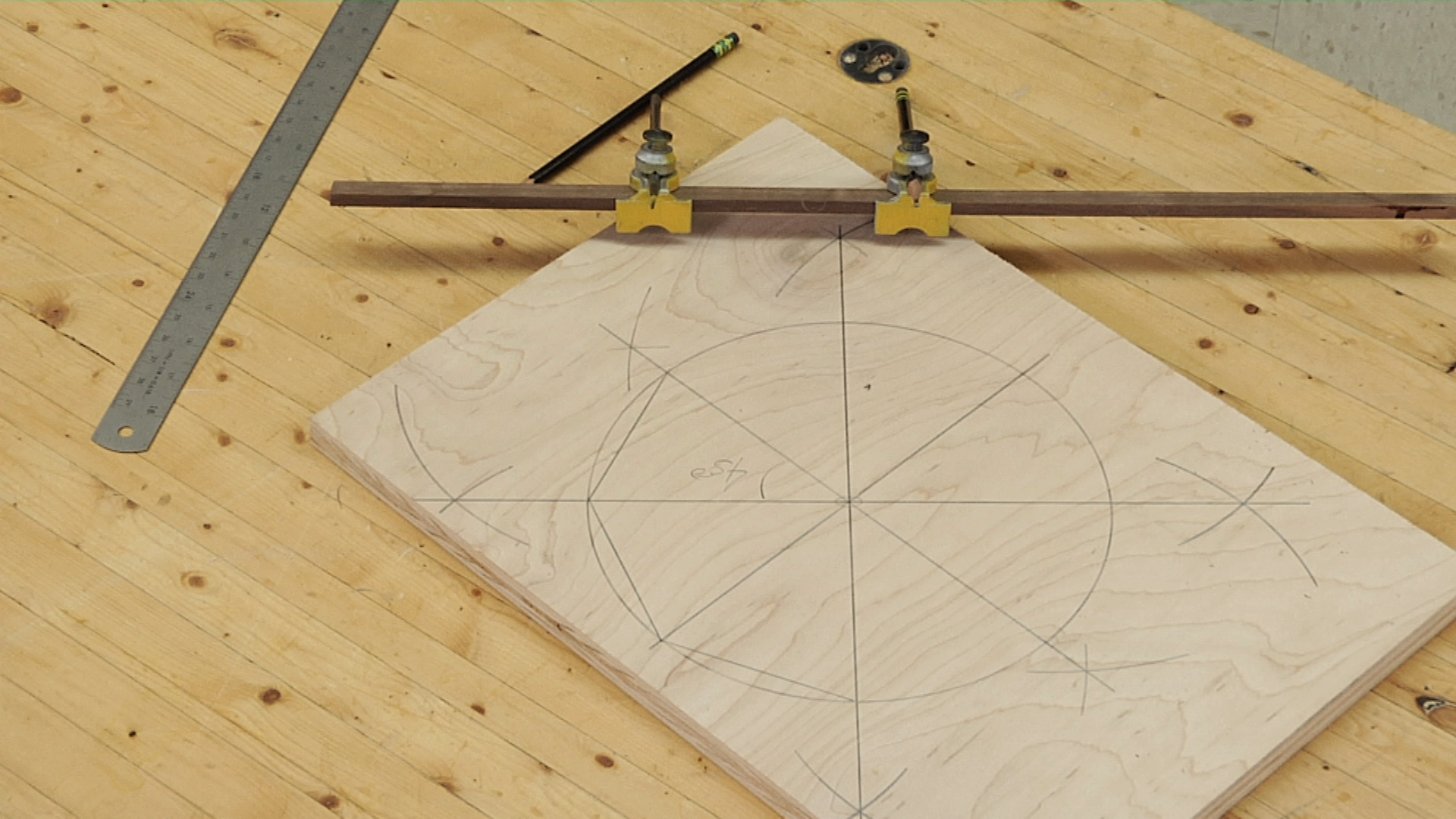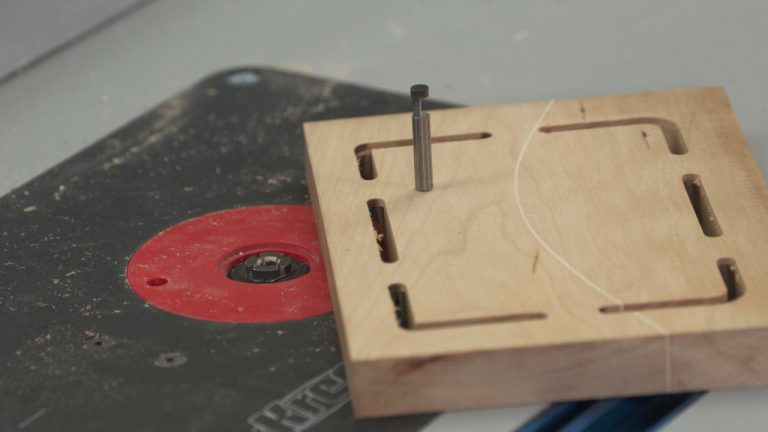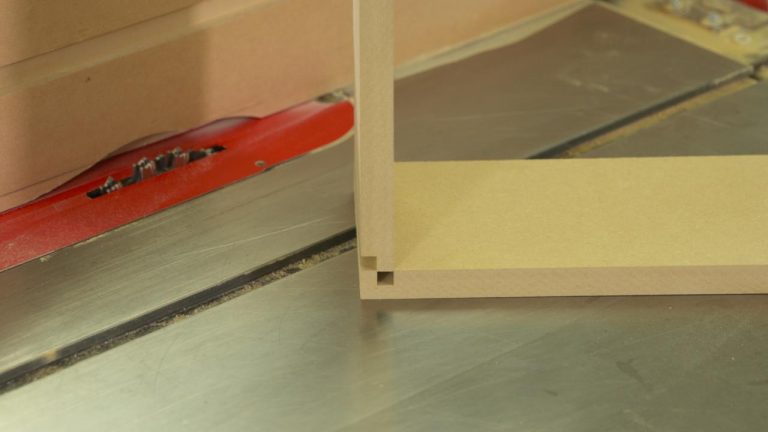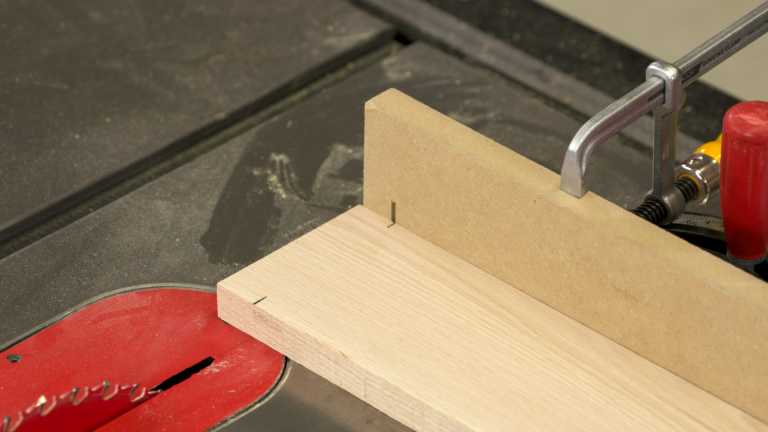Description
Resawing is a great way to efficiently size your lumber to the desired thickness, and unlike planing to thickness which causes you to destroy the portion that you remove, with a resaw cut you can utilize both pieces. You can resaw narrow boards on a table saw, and wider boards on a bandsaw if yours has adequate capacity, but have you ever thought of using both of these tools to team up on the same cut where the table saw does not have adequate capacity to perform the entire operation? The benefit of taking this approach is that the table saw if brilliant at doing a large portion of the work with precision while also setting a path for the bandsaw, and this makes it much easier to do the remaining work on the bandsaw without an elaborate resaw setup that you would want to do for a full resaw cut.
Table saw first
Your first step will be to set the table saw so that the blade is high and positioned on the point of your work piece where you want to make the cut. You’ll want to accommodate some additional stock removal following the final resaw cut, but not as much as you would with a bandsaw because the table saw will make a much flatter cut. Make the first cut, then keep the same board face against the table saw fence to make the second cut.
Finish with the bandsaw
Because you have removed a portion of the stock already and you have kerfs cut in the board, you can freehand the bandsaw resaw cut following the line that was established by the table saw cuts. The beauty of this approach is that you can do it without installing a resaw blade or setting up a fence.
